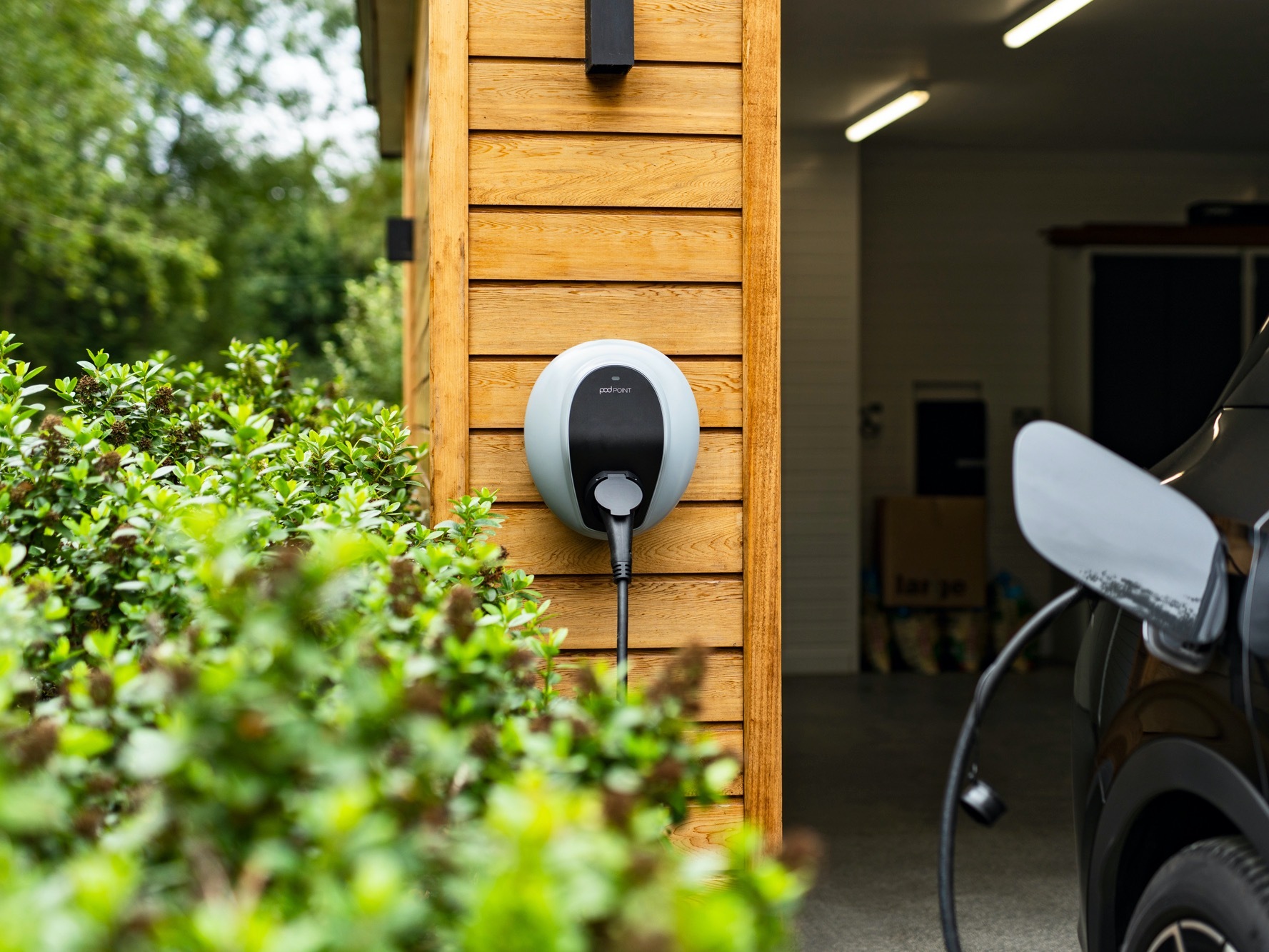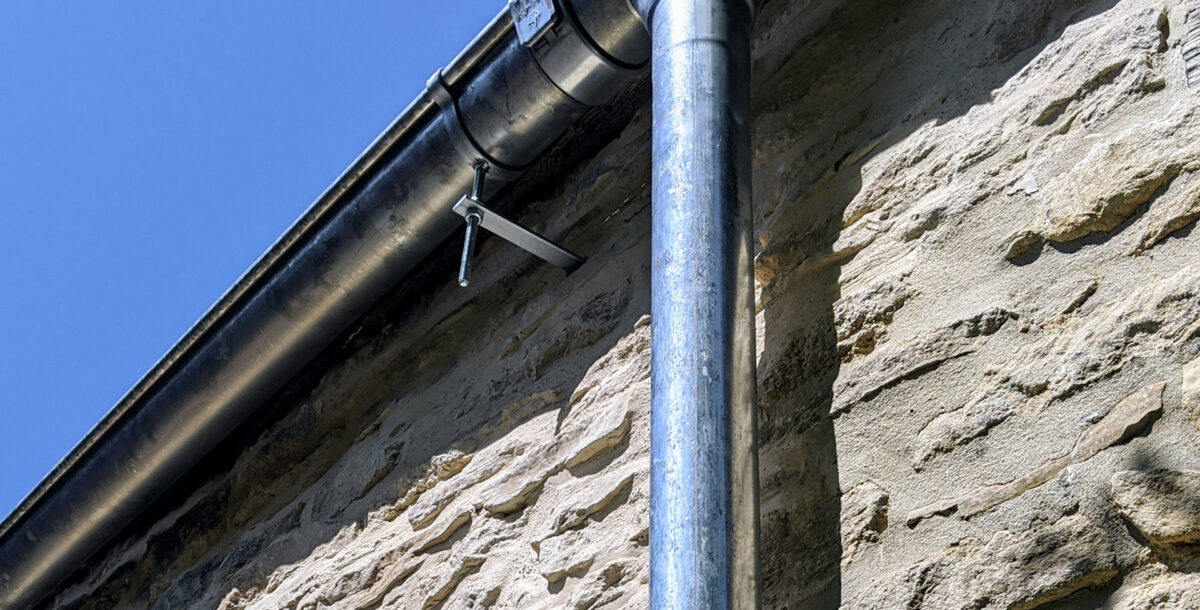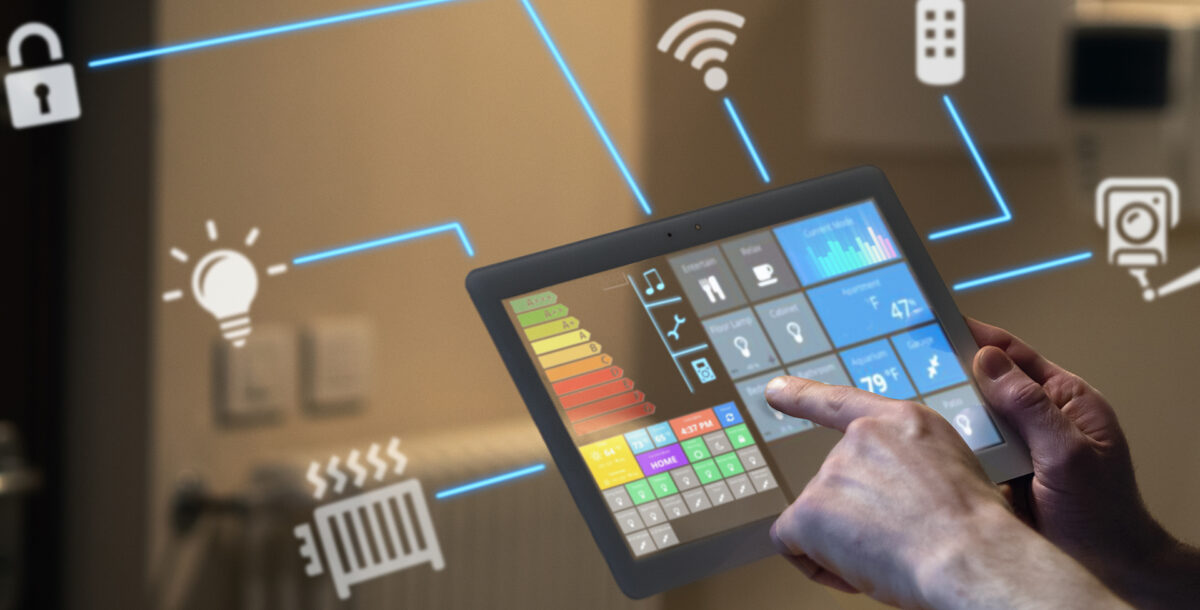EV charging at home: the complete lowdown on car charge ports
If you're revving up to buy an electric or hybrid car, a home EV charger could make life much easier
Hooked on hybrid? Enamoured with electric? If you’ve decided to upgrade to a greener vehicle, you may be wondering if it’s worth installing an EV charger at home.
Having an at-home EV car charging point might seem convenient, but it is a further outlay on top of the price of your car. So it’s wise to sense-check if the extra spend is worth it. Or whether you can rely on external public charging points for power.
We spoke to a number of experts, including Paul Caulfield, managing director of independent EV charger supplier Green Electrical UK. They’ve told us everything you need to know about the process, how much it’s likely to cost and whether it’s worth it.
An introduction to EV car charging
Before we go any further, it’s important to understand how EV chargers can differ, and which types are compatible with your vehicle. That way, you’ll know exactly what your electric car requires.
AC and DC – the two charging methods
There are two ways to ‘feed’ an electric vehicle – with AC (alternating current) and DC (direct current). All batteries store the energy needed to power your car as DC. But while some vehicles will only be able to take the electricity from the charger as AC and convert it to DC, others can also take the DC energy directly, which is much faster.
Typically, a car can be fuelled by an AC charger only, or both AC and DC chargers. “Some cars, particularly older models, are only suitable for AC,” says Caulfield.
It’s important to note that residential buildings with a single-phase electricity supply can ONLY be fitted with AC chargers, with a maximum charge of 7kW. Whereas standalone public charging stations might be AC or DC.
“Typically, the DC ultra-fast chargers we see now have charging rates from 50kW to 175kW – by comparison, for a standard home, the maximum charge is 7kW, which is achieved with a 7.5kW charger,” says Caulfield. “You can charge a Tesla within 20 to 30 minutes using a 175kWh DC ultra-rapid charger, whereas at home, with a 7.5kW charger, it’s a six- to seven-hour process.”
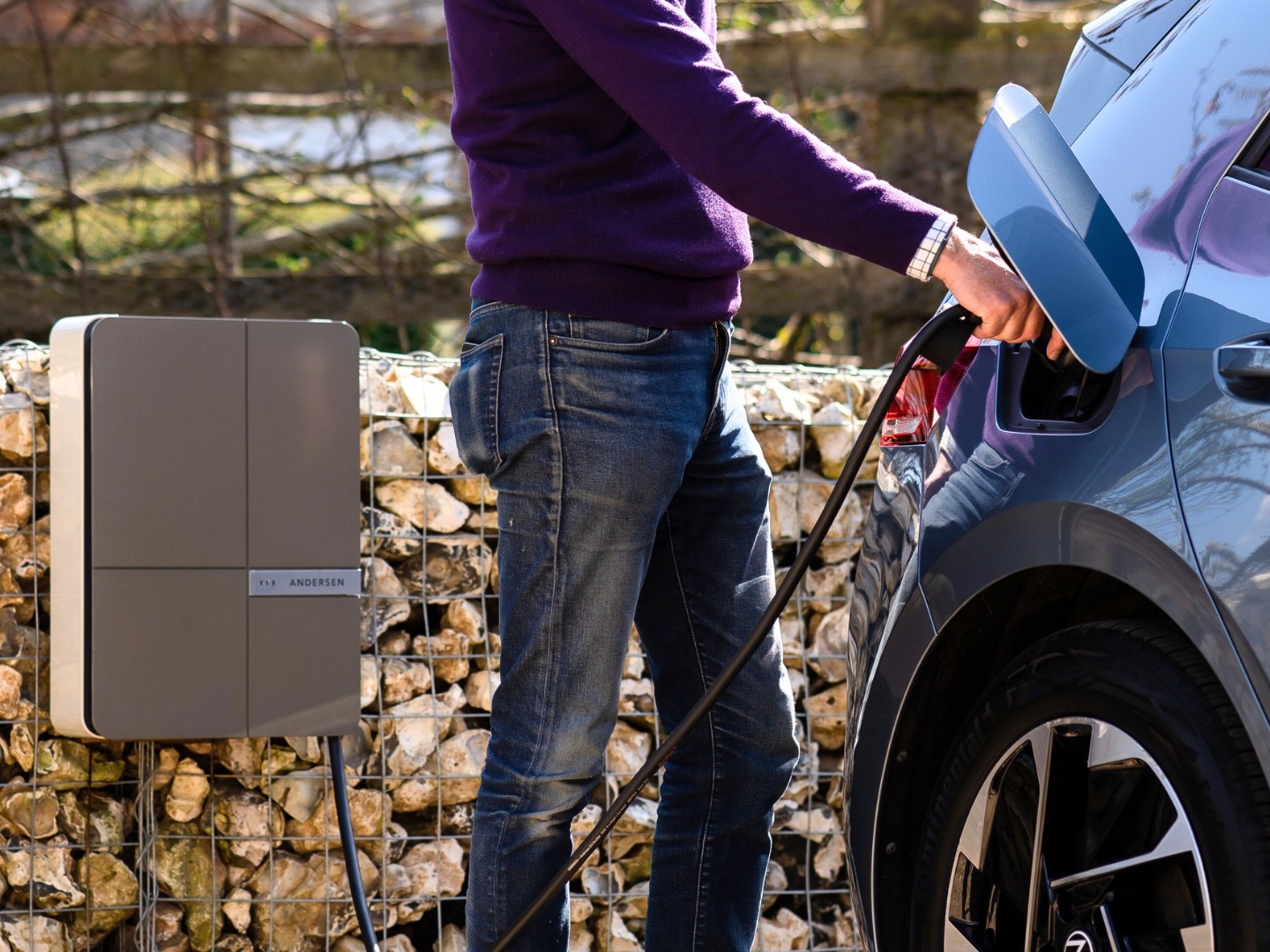
Charging speeds – slow, fast, rapid and ultra-rapid
Rather than refer to AC and DC, you might see car manufacturers and EV charger providers talk about four charging ‘speeds’: slow, fast, rapid and ultra-rapid.
Slow: Speeds of up to 6kW, AC only. Usually achieved with a three-pin charger connector, see below. Can take 12 hours or more to charge a battery and is generally for emergency use only.
Fast: Speeds of between 7kW and 22kW, AC only. Includes home charge points.
Rapid: DC rapid chargers can achieve speeds of up to 50kW and can refill an EV battery to 80% in about 40 minutes. AC rapid chargers reach speeds of 43kW.
Ultra-rapid: Typically rated at 100kW upwards, these DC chargers can charge in 20 to 30 minutes.
EV charging connector types
EV connecting does not currently follow one standard, which means it can be tricky to explain. It’s best to think of your electric car a bit like your phone. Just like your ‘phone-side’ connector might be a Lightning connector (Apple) or a USB-C or Micro USB (Android), your ‘car-side’ connector will generally be a Type 1, a Type 2 or a Combo Type 2.
Car-side connector Type 1: A legacy connector found on older models of Asian brands such as Honda, Toyota and Mitsubishi, and some US car brands. They have a five-pin plug.
Car-side connector Type 2: Historically used by European car brands such as Volkswagen and BMW, and now the universal standard for all cars (although sometimes in conjunction with a DC connector, see below). They’re often called ‘Mennekes’ connectors, after the German manufacturer that invented the design. They have a 7-pin plug.
CCS Combo/Type 2 car-side connector: Found on cars that support rapid DC charging.
Alternatives to the CCS (Combined Charging System) standard of DC charging include CHAdeMO (found on Mitsubishi Outlander PHEV and Nissan Leaf) and Tesla’s proprietary Type 2 connector.
Next, you have your car’s charger-side connector. On a phone, this will usually be USB-C. In the case of your car’s charger-side connector, you’ll encounter different connectors depending on the origin, make and model of your car and whether it’s capable of slow, fast, rapid or ultra rapid charging. These are the most commonly found:
3-pin charger-side connector: A standard three-pin plug that fits into a wall socket. Generally supplied by your car manufacturer to be used in an emergency.
Universal Type 2 charger-side connector: Compatible with home and public AC charging station
CCS Combo/Type 2 connector: Compatible with home EV chargers and ultra-fast public DC chargers.
Tethered versus socketed chargers
“At-home chargers come in two varieties,” explains Caulfield. “There’s tethered, where the charging cable is permanently attached to the charger, like a petrol pump with a nozzle. This typically comes with a five-metre charging cable, though this can be 7.5m or 10m. The second variant is a socketed charger, where you’ll need to use the Type 1 or Type 2 lead that was supplied with your car.”
“Tethered chargers are slightly more popular, but there’s not much in it,” he adds. “They’re slightly higher in price, by £30 to £50, but I think they’re more convenient, as you’re not having to go to the boot of your car to get the lead out every time you want to charge. That said, some people prefer socketed chargers because they are neater in appearance.”
Do I really need an EV charger at home?
Technically, you don’t need an EV charger at home to live with an electric vehicle, as you can use the UK’s network of public chargers. According to government statistics, as of 1st January 2024, there were 53,677 public electric vehicle charging devices installed in the UK – and the government has committed £1.6billion to expanding UK charging network, with around 300,000 public chargers expected to be available by 2030. But there are a few reasons why you might not want to rely on them.
1. Demand is outstripping supply
With 1.1 million electric and hybrid vehicles already in use – that’s one in every 32 cars – and the Government’s 2030 proposed ban on petrol and diesel vehicles creeping ever closer, demand for these charging points is growing all the time.
2. Public chargers can be expensive
Many ‘en route’ chargers – those you’ll find in motorway service stations and retail parks – are DC ultra-fast chargers. But while they may be quick to charge, they’re costly to use.
“The tariffs to use them sit at around £0.69 per kWh,” says Caulfield. “If you’re charging your car for a range of 200 miles, that could equate to a cost of £25, versus charging your car at home for £5.50 on the right tariff.”
3. Certain parts of the UK have fewer public chargers
According to those same government statistics: “there is an uneven geographical distribution of charging devices within the UK. Some UK local authorities have bid for UK government funding for charging devices, and others have not”.
For example, in London there are 210 public charging devices per 100,000 of population, while in Yorkshire and the Humber, there are just 49. The average in England is 82; in Scotland it’s 84; in Wales there are 72 per 100,000 people, and in Northern Ireland that figure falls to just 24.
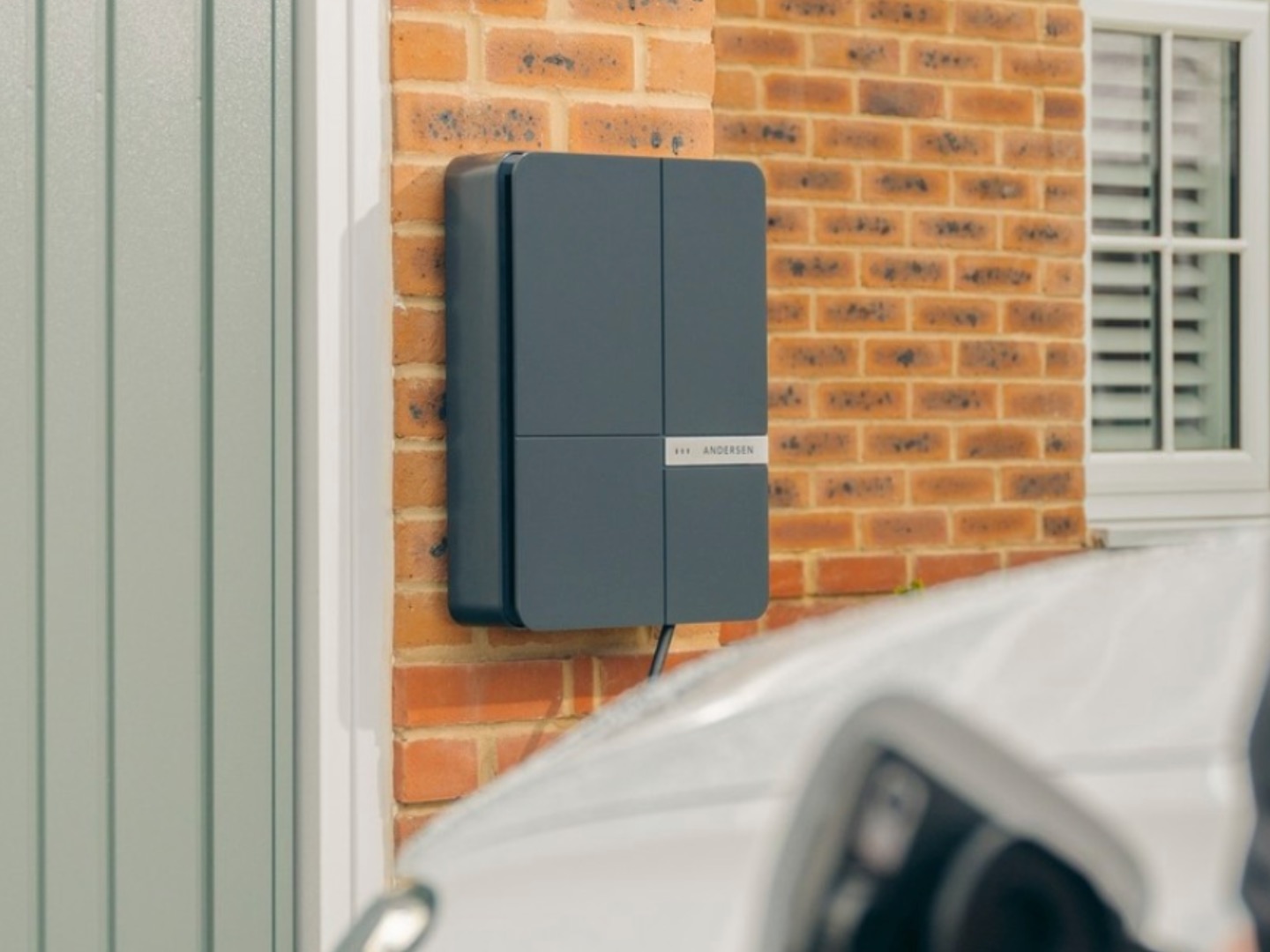
“Electric vehicle uptake is a key part of the UK’s drive to net zero and as more electric vehicles hit the road, it’s important to have the right solutions in place for those who are able to make the switch and encourage as many people to do so as possible,” says Kim Royds, director of mobility at Centrica New Business & Net Zero.
“Public charging is one way to support this – however the inequality in infrastructure is a hurdle to people. We need to strike a balance between home and public charging in order to create an easily accessible and cost-effective infrastructure that doesn’t exclude anybody from the transition.”
What are the benefits of having a home EV charger?
There’s a lot to be said for having your own EV charger at home. The perks include:
- The peace of mind that comes from setting off on a long journey with a full battery.
- There’s no need to hunt for a petrol station or charging point. “You save time and fuel by not having to drive to find a petrol station or DC super charger, which can otherwise take at least 10 minutes out of your day, or longer if you’re waiting for your car to charge,” says Caulfield.
- While you’ll charge your car at a slower rate, it will cost far less. “The cost difference of using a home EV charger versus a public charging point just can’t be beaten,” says Caulfield.
- You can advantage of special EV smart tariffs offered by energy providers like Octopus, OVO, EDF and British Gas.
- With scheduled charging, you’ll further reduce fossil fuel emissions. “If you’re with a green provider such as Octopus, the energy used overnight, when there’s less demand on the grid, is more likely to be drawn from renewable sources,” says Caulfield.
- If you have solar panels, you can harness their energy to charge your car for free.
The key features of an EV charger
As EV chargers have evolved, their features have become more universal. Aside from compatibility with your make or model of car, Paul Caulfield points out the main features any good EV charger will have:
- PEN fault protection: “Should the neutral get disconnected somewhere in the electricity supply, this protection makes sure the metallic body of the car doesn’t become live with current by shutting the charger down. If your charger doesn’t have this built-in, your installer will need to fit an additional PEN fault device at an extra cost.”
- Remote locking: “This allows you to remotely lock your charger via an app, so no one can use it. The charger will still receive any over-the air updates.”
- Solar integration: “If you’ve got solar panels, you’ll be able to send whatever energy you are generating straight to the car. So the sun could be charging your car for free.”
- Scheduled charging: This allows you to choose when you want your charger to start drawing electricity. “Many EV chargers, including ours, use technology to schedule charging, usually overnight, when electricity demand is quietest and often cheapest,” says Kim Royds. “That way we’re able to offer cheaper EV charging rates and manage the demand on the grid.”Other things to consider include:
- Charger cable length: If you’ve chosen a tethered charger, you’ll need to make sure that the lead is long enough to reach from the charger wall box to the car.
- Charger power: You can buy home EV chargers from 3.6kW to 22kW. But unless you have a three-phase power connection (nearly all homes will have a single-phase connection), it’s almost always best to pick a 7kW EV charger.
- Customer support: “Customers often ask us about the after-sales support about these charger brands,” says Caulfield. “So that is always worth investigating.”
How much will it cost to install an EV charger at home?
“Most of the 7kW chargers we sell at our EV Charger Store at Green Electrical are between £1,100 and £1,300, inclusive of supply, installation and VAT,” says Caulfield. “Andersen’s premium-built chargers may be a little more, around £1,700.”
Caulfield does caveat, however, that as a regional company, it can’t necessarily compete with national prices – though they are a greener option in terms of the distances travelled by installers, and so on. According to national supplier Octopus Energy, “charger installations start from £899 for a standard installation”.
Around 80% of Caulfield’s installations are standard. Non-standard installations may occur where the required cabling between the electrical distribution point and the charging station is more than 10-15m, or more work is needed to lift floorboards, etc.
Can I get a grant towards the cost of an EV charger?
Sadly, some government incentives have been discontinued, particularly the Electric Vehicle Homecharge Scheme (EVHS) available for homeowners, which expired in March 2023.
But there are exceptions. For example, if you live in a flat or rent your home and it has off-street parking, you may be able to get up to £350 toward the cost of purchasing and installing an electric car charger, as part of the Office for Zero Emission Vehicles (OZEV) EV Chargepoint Grant. Applications are open until 31st March 2025.
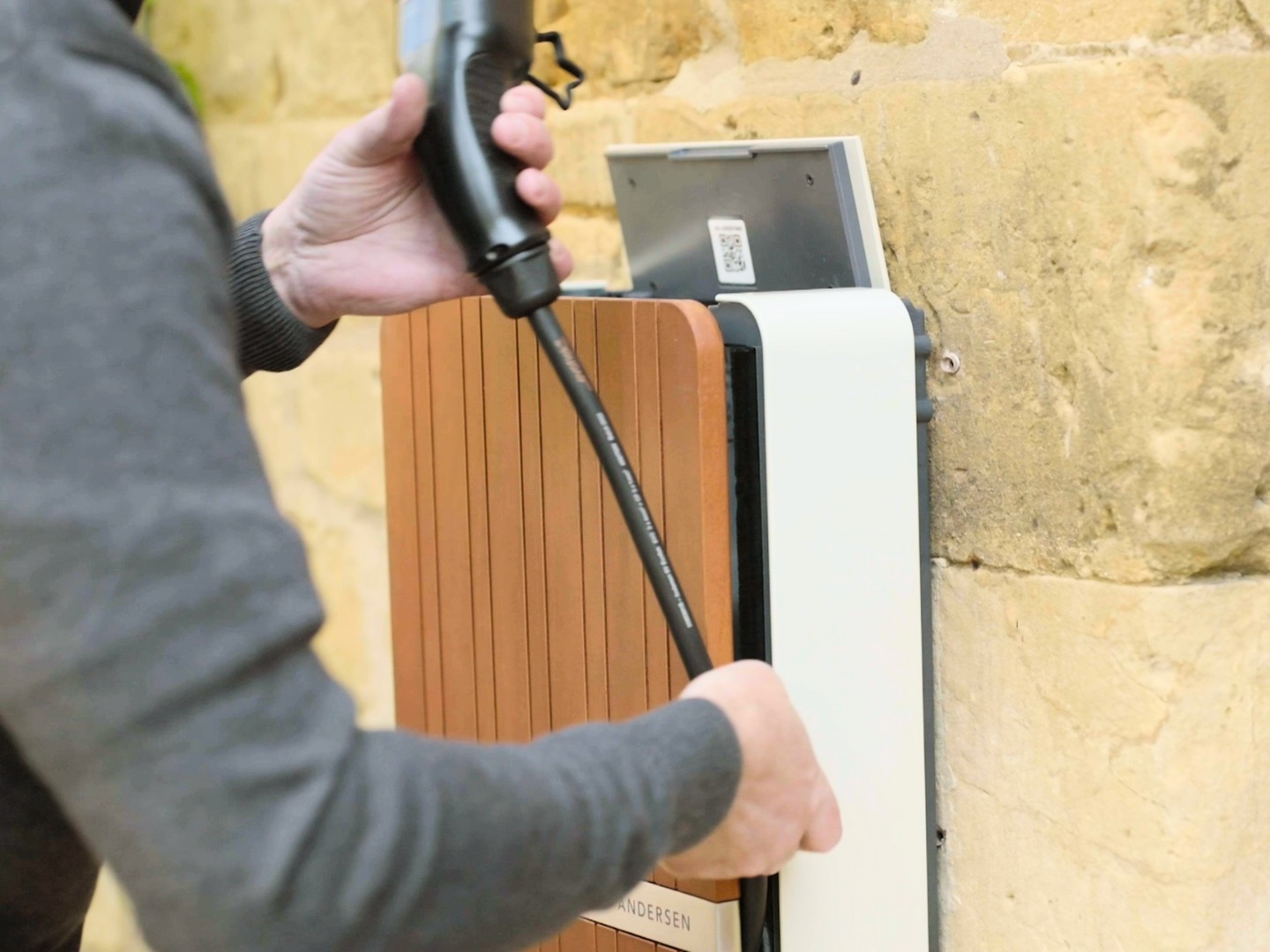
How can I save on the cost of running my EV charger?
“At home, charging an electric car costs about £17 for a full charge and is the most convenient and cost-effective way to keep your car fully charged,” explains James McKemey, head of policy and public affairs at Pod Point. “To save on the cost of running your EV charger at home, drivers can leverage comparison sites and switch providers to get the best rate, keeping their per kWh price low. In addition, many energy providers offer ‘time of use’ tariffs, allowing EV drivers to charge their vehicles overnight at cheaper rates.”
“For example, any customer that buys a Pod Point has access to our exclusive EV Tariff with EDF at an off peak rate of just 8.49p*, meaning you can drive for less than 2.5p per mile.”
“You won’t find much of a price difference in comparable public chargers, so shopping around for a cheaper public charger can sometimes be more effort than it’s worth.”
*Cost calculated at 32p/kWh based on a usable battery is ~54kWh (90%).
Should all new-build homes have EV chargers?
We spoke to Gavin Thorne, group head of infrastructure and utilities at home builder Barratt Developments. “The arrival of new Part S building regulation, which came into force in June 2022, means that all new-build houses in England with allocated parking must have a socketed 7kW charger fitted as standard,” he explains. In this case, allocated parking could mean a garage, private driveway, or a parking space within the boundary of the site intended for use by the owner of the property or a visitor to it.
“Blocks of apartments with underground or under-croft parking are exempt from the regulation,” adds Thorne. “Although local planners often want EV chargers to be installed, as residents want to have the convenience of charging close to home. Besides, with the current number of EVs on the road in the UK sitting at around 1 million, and accounting for around 20% of new vehicle purchases, we anticipate there will only be greater demand for charging points on homes.”
Is this the case in Scotland and Wales?
“The Part S regulation came into force in England in June 2022. Although there was a transition of a year before it became law on all new developments,” says Thorne. “In Scotland, new regulatory requirements for Electric Vehicle Charging Points (EVCP) came into force on the 5th June 2023, with no transitional period. The requirement applies to any building warrant submitted on or after the 5th June 2023.”
“In Wales, there are currently no regulatory requirements to install an EVCP. We understand that some local planning authorities are stipulating they are installed in Wales, but we have not yet encountered this.”
Do I need permission to install an EV charger?
Installing an EV charger is deemed ‘notifiable work’ under building regulations. However, provided you use a registered Competent Person from an approved scheme, you don’t have to notify building control. But do make sure that your installer issues you with a minor works electrical certificate, detailing what’s been done.
In the main, you won’t need planning permission to install an EV charger, but there are exceptions. “While most homeowners with off-street parking won’t need planning permission, it’s a different situation for listed properties, and one that sometimes catches people out,” says Matthew Gibbons, managing director of electric car charging specialists, Plug&Drive.
“If you own a listed building and you’re thinking of installing an EV charger, be aware you’ll need Listed Building Consent for any alterations that could be considered to affect the character of your property. This includes an EV wallbox.”
“It’s not just listed buildings that could require planning permission for EV chargers either. Homes within a conservation area or near a heritage site require it, too. It’s also worth checking whether your property was built with any restrictive covenants, which outline ways it can or can’t be used or developed.”
“If any of the above apply to you, seek consent first before installing an EV charger,” warns Gibbons. “It’s worth asking your neighbours, too. They will be consulted and given a chance to raise objections, but a friendly conversation first can usually help to avoid this happening.”
Can I have an EV charger if I live in a flat?
As mentioned, if you are moving to a new-build, councils are encouraging developers to install EV chargers in parking bays allocated to apartment blocks. For leaseholders living in a flat with off-road parking, you may be able to install an EV charger. But you’ll need to seek permission from the freeholder, and to adhere to building and planning regulations.
Where is the best place to install an EV charger?
“We don’t have a hard and fast rule about where EV chargers are located,” says Thorne. “It all depends on the best place for an individual plot. Usually, we install chargers on the side of the home, on a garage, or a post, so they are next to the car-parking space. In instances where parking bays are situated away from houses, EV charging points can be installed on free-standing mounts.”
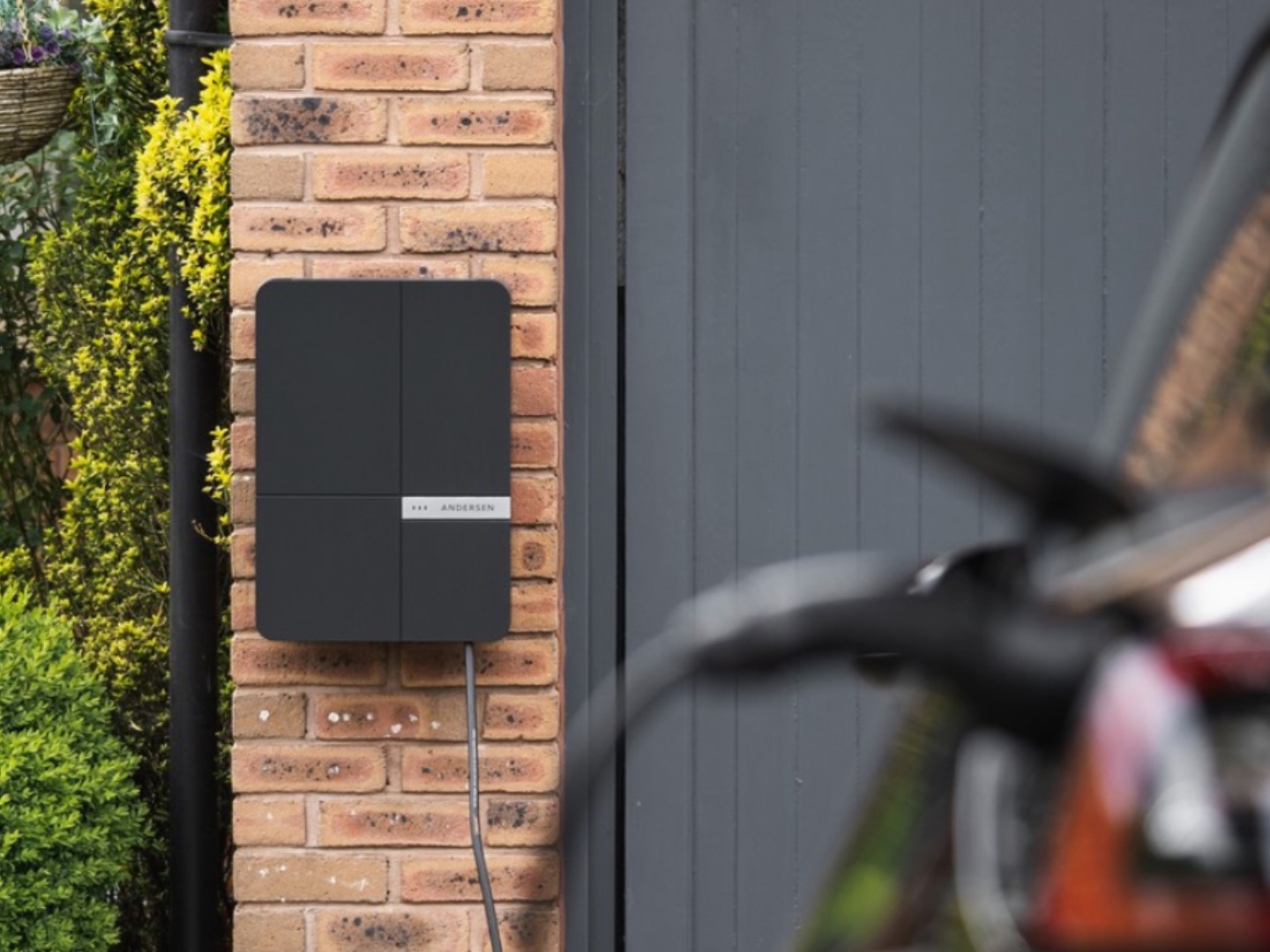
“We have had cases where homeowners ask for chargers to be mounted on freestanding pedestals,” adds Caulfield. “But this is more expensive as groundworks will be required, and extra, thicker cabling will be required.”
What can I do if I don’t have a drive?
“Currently, charging your electric car with no driveway remains a bit of a challenge. However, it’s certainly not impossible, and I myself live without a home charger,” says James McKemey, who relies on public charging points at his offices, and at supermarkets and service stations.
“At present, chargers cannot be installed where the cable may foul public pavements, walkways, or other public rights of way, due to safety concerns and obstruction for vehicles and pedestrians.
Are EV chargers weatherproof?
“Bad weather shouldn’t have an impact on your EV charger, despite the severe rain we’ve had recently,” says Caulfield. “EV chargers are IP rated – usually to IP54 or IP65 – and have an operating temperature of between -20-30 degrees C up to around +50 degrees C.”
“The only thing we would advise,” he adds, “is not to install them on a south-facing wall, so they aren’t in full sun. If possible, put them in a shaded spot.”
“The weather can at times impact charging routines, though typically only in extreme circumstances,’ adds James McKemey. “For example, extremely cold, or extremely warm weather can result in slightly longer charging times. The reason for this is that EV batteries have an optimum temperature of around 20-25 degrees, at which they will work to maximum efficiency.”

